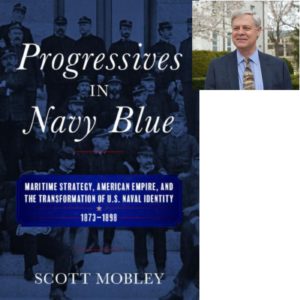Professor Lisa Shapiro holds masters degrees in literature and management and teaches at San Diego Mesa College. She has previously taught creative writing. She’s written a book based on thousands of archived letters sent by San Diego State students who were in WWII to their professor Dr. Post. I interviewed Professor Shapiro about the book titled “No Forgotten Fronts.”
1:54 – Professor Shapiro talks about her first historical project. It dealt with European medieval historical fiction. Her interest in WWII came out of her work with community college students in San Diego.
3:57 – She began studying war literature and got a second degree in that subject. In the school archives she found letters written to a professor during WWII.
5:46 – Professor Shapiro explains the basis and details of the book. It’s a collection of student letters written to their professor, Dr. Post. He turned the letters into a regular newsletter. He did this through the entire war.
10:16 – Several hundred students participated in writing to Dr. Post. This includes men and women and many wrote repeatedly. People also provided funds to support him. The original documents are in the San Diego State college archives.
12:16 – Professor Shapiro discusses how the US military censors worked with Dr. Post. He took care to keep out sensitive information out of his newsletters.
16:35 – Sometimes students wrote things only for Dr. Post and not the newsletter.
17:16 – Dr. Post was also able to connect two brothers, one of whom was a prisoner of war during the war. Dr. Post even visited their mother to provide reassurance about her sons. One student who was at Anzio wrote that he had lost his marbles and Dr. Post knew he needed some mental comfort. Dr. Post notified a nearby chaplain in Europe from San Diego State to visit this soldier and also gave comfort to the student’s father.
22:54 – Professor Shapiro explains how Dr. Post got information on killed or injured students and how he dealt with that information. Dr. Post would also update information he had published.
27:57 – Dr. Post didn’t have any children. Professor Shapiro discusses how Dr. Post met his wife in college. But both were active in the lives of their students. He also did trick roping and performed for his students. His wife was a singer. Dr. Post did have a nephew in the Marines who would write to Dr. Post.
30:36 – There don’t seem to have been any other people who collected letters from specific groups during WWII. Others have created letter collections after wars.
34:43 – The students loved getting the newsletters.
36:07 – Professor Shapiro focused on the letters that captivated her. The emotion of the letters touched her. She was able to track the stories of specific individuals.
40:28 – Professor Shapiro reads a letter from Herman Adelson who nicknamed himself Little Geronimo since he was a paratrooper. He and the others really believed in what they were fighting for. For good, freedom and democracy.
43:22 – A letter arrived for Dr. Post saying that Herman had died during D-Day and included a eulogy for him. San Diego State lost three members of their championship basketball team during the war. But the community found comfort in knowing what their loved ones had been doing.
48:29 – Professor Shapiro did a lot of reading to brush up on her knowledge of WWII and current events at the time the letters were written. She used Anthony Deevers’ history. She also read a lot of San Diego history. San Diego had a lot of women participate in the war. A lot of San Diego State students became pilots.
53:40 – Professor Shapiro had few problems getting the book published. She had to shorten the book since it was very long at first.
55:02 – Grif Williams was one of the students and was famous for being on the Doolittle Raid. He was taken prisoner eventually and he was eventually a cellmate with another San Diego State student who had been captured in Germany.
59:26 – The website for the book is NoForgottenFronts.com.
For more “Military History Inside Out” please follow me on Facebook at warscholar, on twitter at Warscholar, on youtube at warscholar1945 and on Instagram @crisalvarezswarscholar
Guests: Lisa Shapiro
Host: Cris Alvarez
Tags: war, military, WWII, WWII history, san diego, san diego state, pacific war, d-day, north africa, europe, germany, doolittle raid, anzio


 Ted Edwards grew up around WWII veterans and ended up studying history in college. He’s a mountaineer and involved with US Gymnastics and kept journals about his experiences. These varied interests resulted in a meeting with some famed WWII naval aviators and he ended up writing a book about one of them. I interviewed him about the new book.
Ted Edwards grew up around WWII veterans and ended up studying history in college. He’s a mountaineer and involved with US Gymnastics and kept journals about his experiences. These varied interests resulted in a meeting with some famed WWII naval aviators and he ended up writing a book about one of them. I interviewed him about the new book.